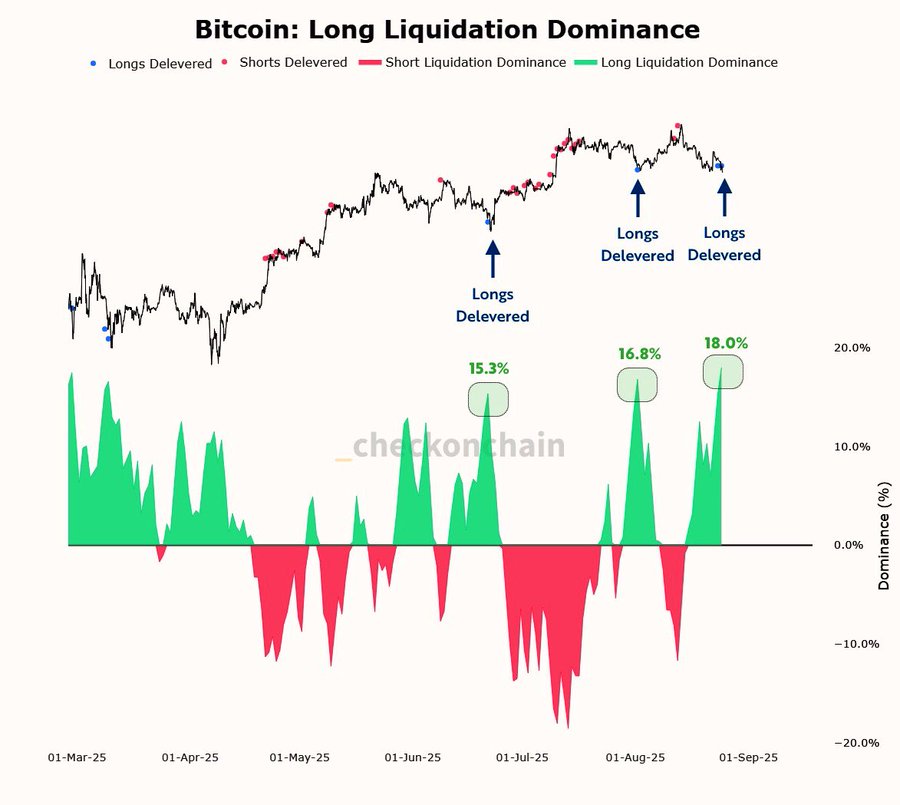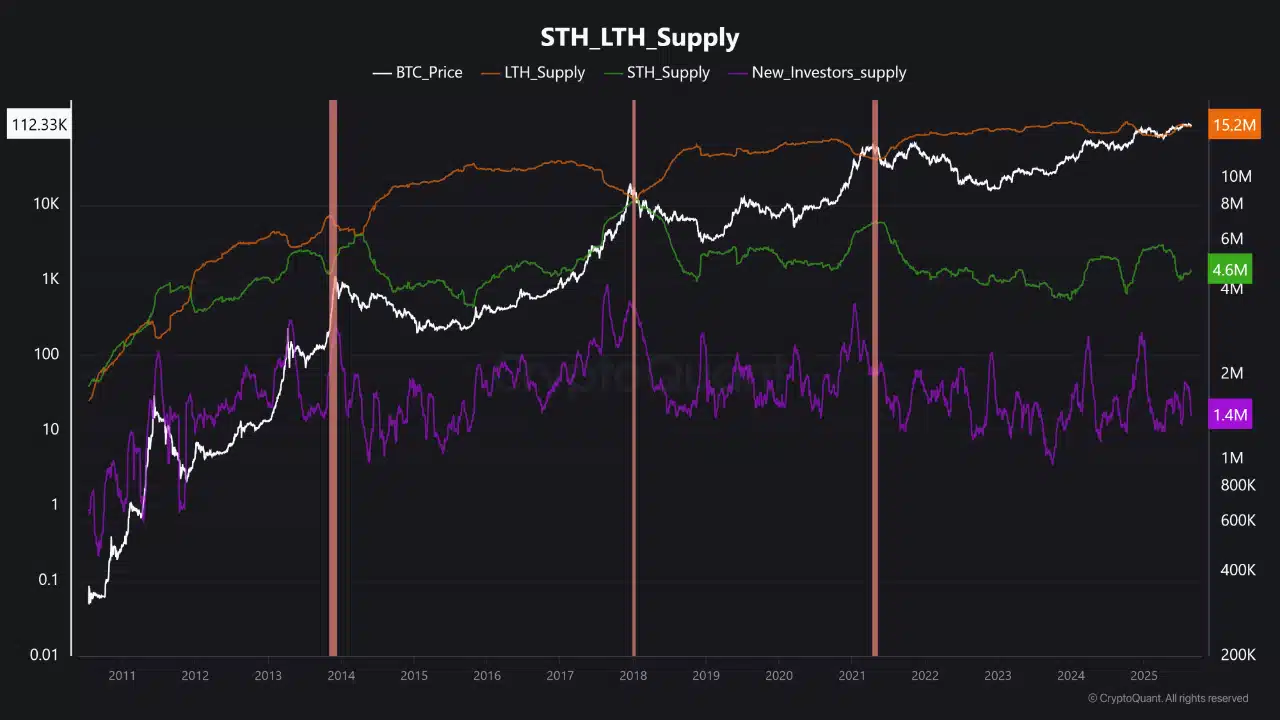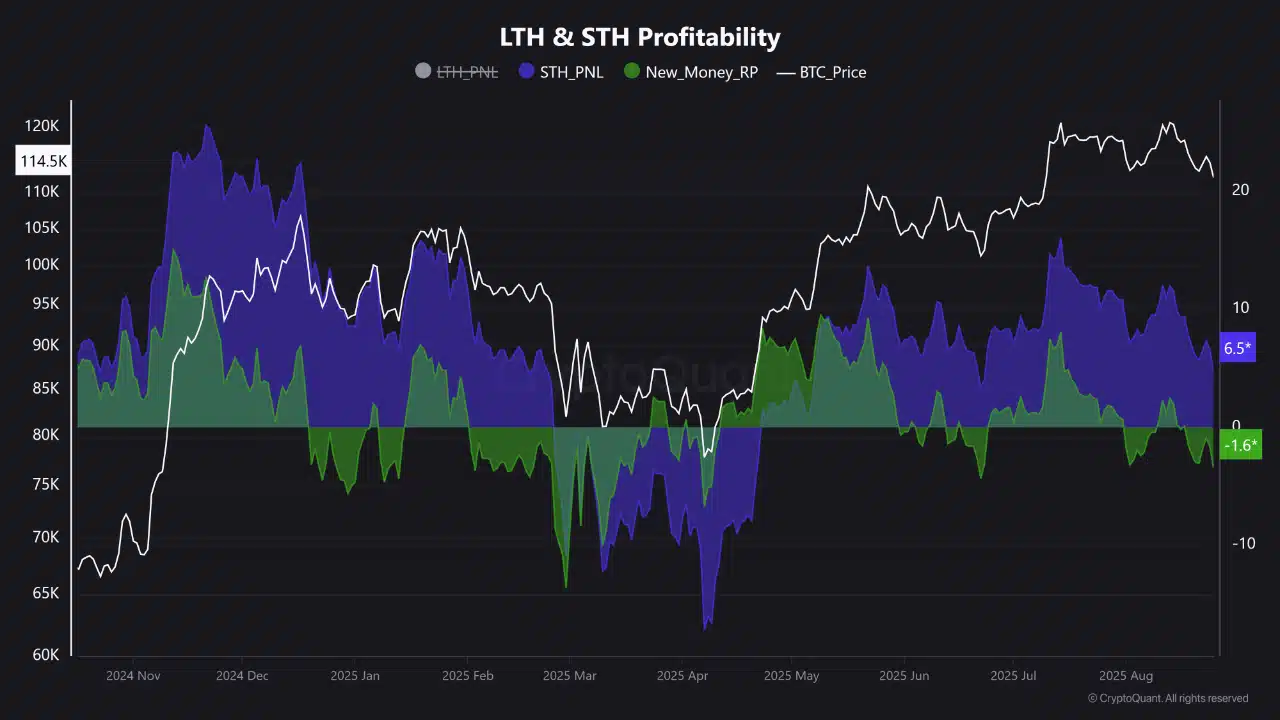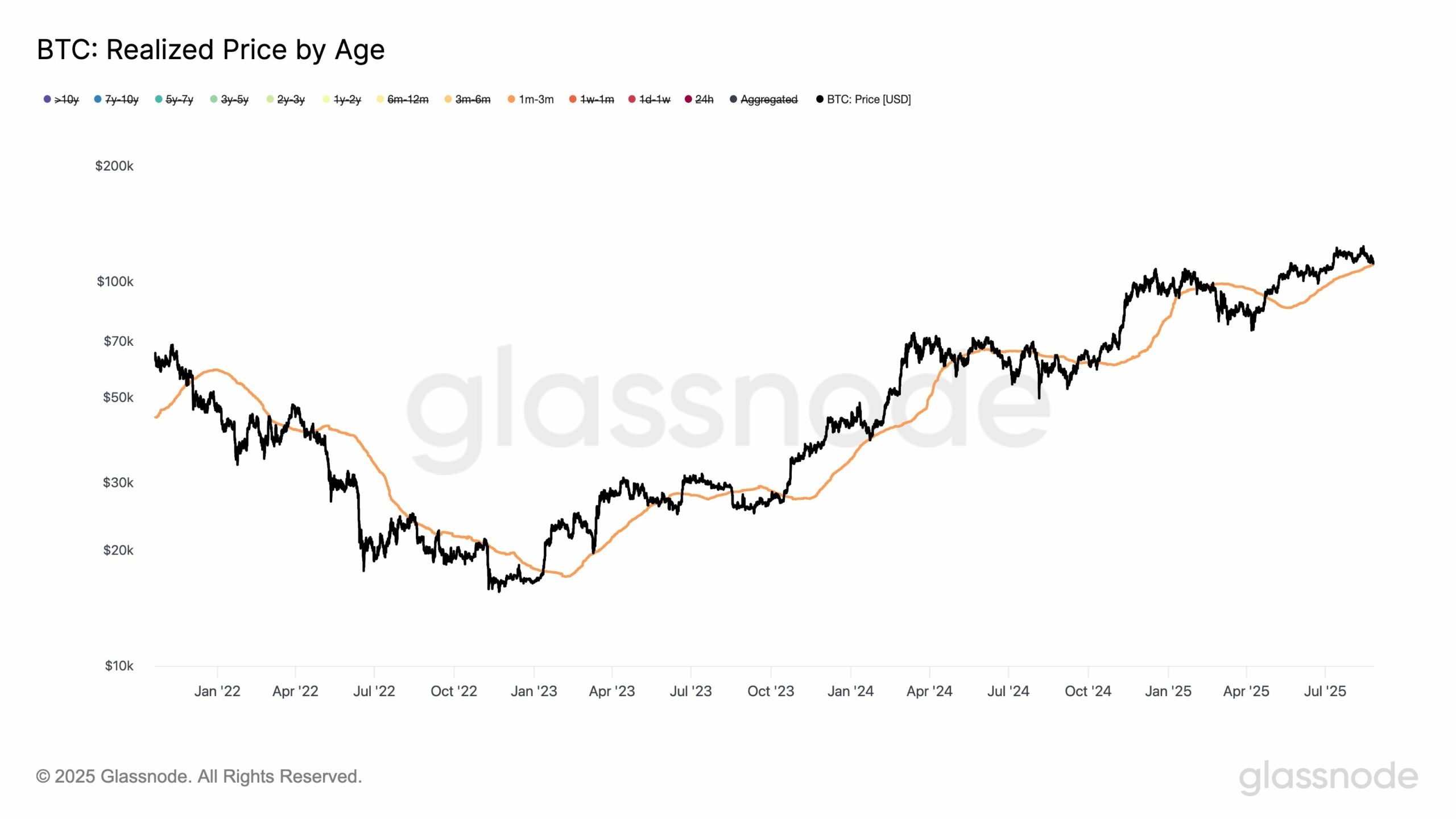| COINOTAG recommends • Exchange signup |
| 💹 Trade with pro tools |
| Fast execution, robust charts, clean risk controls. |
| 👉 Open account → |
| COINOTAG recommends • Exchange signup |
| 🚀 Smooth orders, clear control |
| Advanced order types and market depth in one view. |
| 👉 Create account → |
| COINOTAG recommends • Exchange signup |
| 📈 Clarity in volatile markets |
| Plan entries & exits, manage positions with discipline. |
| 👉 Sign up → |
| COINOTAG recommends • Exchange signup |
| ⚡ Speed, depth, reliability |
| Execute confidently when timing matters. |
| 👉 Open account → |
| COINOTAG recommends • Exchange signup |
| 🧭 A focused workflow for traders |
| Alerts, watchlists, and a repeatable process. |
| 👉 Get started → |
| COINOTAG recommends • Exchange signup |
| ✅ Data‑driven decisions |
| Focus on process—not noise. |
| 👉 Sign up → |
Bitcoin pullback is a short-term price reset after a leveraged long liquidation event that removed speculative holders and tested support near $110.8K; long-term holders remain intact, suggesting the move is a shakeout rather than a structural breakdown.
-
Long liquidation dominance spiked to 18%, wiping out overleveraged longs.
-
Short-term sellers (1–3 months) faced average unrealized losses ~3.5%, reducing overhead supply.
-
Holding above $110.8K—the 1–3 month Average Cost Basis—would likely confirm a healthy reset.
Bitcoin pullback: BTC shakeout tests $110.8K support — read key levels, on-chain data, and what traders should watch next.
What caused the Bitcoin pullback?
The Bitcoin pullback was triggered by a rapid long deleveraging event on August 24th that forced liquidations, spiking Long Liquidation Dominance to 18%. Overleveraged positions were cleared, pushing short-term holders to sell and testing critical support at $110.8K.
| COINOTAG recommends • Professional traders group |
| 💎 Join a professional trading community |
| Work with senior traders, research‑backed setups, and risk‑first frameworks. |
| 👉 Join the group → |
| COINOTAG recommends • Professional traders group |
| 📊 Transparent performance, real process |
| Spot strategies with documented months of triple‑digit runs during strong trends; futures plans use defined R:R and sizing. |
| 👉 Get access → |
| COINOTAG recommends • Professional traders group |
| 🧭 Research → Plan → Execute |
| Daily levels, watchlists, and post‑trade reviews to build consistency. |
| 👉 Join now → |
| COINOTAG recommends • Professional traders group |
| 🛡️ Risk comes first |
| Sizing methods, invalidation rules, and R‑multiples baked into every plan. |
| 👉 Start today → |
| COINOTAG recommends • Professional traders group |
| 🧠 Learn the “why” behind each trade |
| Live breakdowns, playbooks, and framework‑first education. |
| 👉 Join the group → |
| COINOTAG recommends • Professional traders group |
| 🚀 Insider • APEX • INNER CIRCLE |
| Choose the depth you need—tools, coaching, and member rooms. |
| 👉 Explore tiers → |
How severe was the liquidity flush?
On-chain trackers reported a concentrated long liquidation episode that exceeded April’s tariff-driven drop in magnitude. Data from CryptoQuant indicated Long Liquidation Dominance at 18%, the highest in recent months.
This magnitude suggests the event preferentially impacted highly leveraged retail and momentum traders rather than established holders.
| COINOTAG recommends • Exchange signup |
| 📈 Clear interface, precise orders |
| Sharp entries & exits with actionable alerts. |
| 👉 Create free account → |
| COINOTAG recommends • Exchange signup |
| 🧠 Smarter tools. Better decisions. |
| Depth analytics and risk features in one view. |
| 👉 Sign up → |
| COINOTAG recommends • Exchange signup |
| 🎯 Take control of entries & exits |
| Set alerts, define stops, execute consistently. |
| 👉 Open account → |
| COINOTAG recommends • Exchange signup |
| 🛠️ From idea to execution |
| Turn setups into plans with practical order types. |
| 👉 Join now → |
| COINOTAG recommends • Exchange signup |
| 📋 Trade your plan |
| Watchlists and routing that support focus. |
| 👉 Get started → |
| COINOTAG recommends • Exchange signup |
| 📊 Precision without the noise |
| Data‑first workflows for active traders. |
| 👉 Sign up → |
Why does this shakeout matter?
The shakeout matters because it shifts coins from weak hands to more resilient holders, lowering overhead supply and improving market structure.
Short-term holders aged 1–3 months saw average unrealized losses near 3.5% and reduced supply, while the broader 1–6 month cohort remained profitable with average gains of ~4.5% (Glassnode, CryptoQuant reported data).
| COINOTAG recommends • Traders club |
| ⚡ Futures with discipline |
| Defined R:R, pre‑set invalidation, execution checklists. |
| 👉 Join the club → |
| COINOTAG recommends • Traders club |
| 🎯 Spot strategies that compound |
| Momentum & accumulation frameworks managed with clear risk. |
| 👉 Get access → |
| COINOTAG recommends • Traders club |
| 🏛️ APEX tier for serious traders |
| Deep dives, analyst Q&A, and accountability sprints. |
| 👉 Explore APEX → |
| COINOTAG recommends • Traders club |
| 📈 Real‑time market structure |
| Key levels, liquidity zones, and actionable context. |
| 👉 Join now → |
| COINOTAG recommends • Traders club |
| 🔔 Smart alerts, not noise |
| Context‑rich notifications tied to plans and risk—never hype. |
| 👉 Get access → |
| COINOTAG recommends • Traders club |
| 🤝 Peer review & coaching |
| Hands‑on feedback that sharpens execution and risk control. |
| 👉 Join the club → |
Holder cohort snapshot (post-flash crash)
| Cohort |
Average P/L |
Implication |
| 1–3 month holders |
-3.5% (Unrealized Loss) |
Fresh investors trimmed positions |
| 1–6 month holders |
+4.5% (Average Gain) |
Remained largely intact |
| Long Liquidation Dominance |
18% |
Significant long clearing |
How likely is Bitcoin to recover from this pullback?
Recovery depends on whether BTC holds the $110.8K level, identified as the Average Cost Basis for 1–3 month holders by Glassnode. Holding this level would indicate the sell-off was a healthy reset; losing it increases the chance of a deeper correction.
Market resilience is bolstered by long-term holders and reduced speculative open interest, but short-term momentum will govern near-term price action.
What should traders watch next?
- Support test: $110.8K — key to confirming a reset.
- Liquidation metrics: Reversals in Long Liquidation Dominance toward normal levels.
- On-chain supply: Reduction in coins held by sub-1 month wallets signals cleanup of weak hands.
Flash crash data and sources
On-chain indicator snapshots referenced: CryptoQuant reported the liquidation spike; Glassnode identified the $110.8K Average Cost Basis for 1–3 month holders. These are mentioned as sources in plain text (CryptoQuant, Glassnode).
The flash crash on August 24th cleared speculative leverage and left market structure that could support a more sustainable rebound, provided key support holds.
| COINOTAG recommends • Exchange signup |
| 📈 Clear control for futures |
| Sizing, stops, and scenario planning tools. |
| 👉 Open futures account → |
| COINOTAG recommends • Exchange signup |
| 🧩 Structure your futures trades |
| Define entries & exits with advanced orders. |
| 👉 Sign up → |
| COINOTAG recommends • Exchange signup |
| 🛡️ Control volatility |
| Automate alerts and manage positions with discipline. |
| 👉 Get started → |
| COINOTAG recommends • Exchange signup |
| ⚙️ Execution you can rely on |
| Fast routing and meaningful depth insights. |
| 👉 Create account → |
| COINOTAG recommends • Exchange signup |
| 📒 Plan. Execute. Review. |
| Frameworks for consistent decision‑making. |
| 👉 Join now → |
| COINOTAG recommends • Exchange signup |
| 🧩 Choose clarity over complexity |
| Actionable, pro‑grade tools—no fluff. |
| 👉 Open account → |
Bitcoin’s sharp pullback has flushed out newer investors, but LTHs remain strong as the market tests key support. Holding above $110.8K could confirm this as a healthy reset and not a full breakdown.
| COINOTAG recommends • Members‑only research |
| 📌 Curated setups, clearly explained |
| Entry, invalidation, targets, and R:R defined before execution. |
| 👉 Get access → |
| COINOTAG recommends • Members‑only research |
| 🧠 Data‑led decision making |
| Technical + flow + context synthesized into actionable plans. |
| 👉 Join now → |
| COINOTAG recommends • Members‑only research |
| 🧱 Consistency over hype |
| Repeatable rules, realistic expectations, and a calmer mindset. |
| 👉 Get access → |
| COINOTAG recommends • Members‑only research |
| 🕒 Patience is an edge |
| Wait for confirmation and manage risk with checklists. |
| 👉 Join now → |
| COINOTAG recommends • Members‑only research |
| 💼 Professional mentorship |
| Guidance from seasoned traders and structured feedback loops. |
| 👉 Get access → |
| COINOTAG recommends • Members‑only research |
| 🧮 Track • Review • Improve |
| Documented PnL tracking and post‑mortems to accelerate learning. |
| 👉 Join now → |
Bitcoin’s [BTC] latest pullback has shaken out fresh investors, but veteran holders aren’t flinching.
After a sharper washout than April’s tariff-driven drop, the market is testing whether it can reset on firmer ground. At press time, BTC held just above $110K, matching the Average Cost Basis for 1–3 month holders.
| COINOTAG recommends • Exchange signup |
| 🎯 Focus on process over noise |
| Plan trades, size positions, execute consistently. |
| 👉 Sign up → |
| COINOTAG recommends • Exchange signup |
| 🛠️ Simplify execution |
| Keep decisions clear with practical controls. |
| 👉 Get started → |
| COINOTAG recommends • Exchange signup |
| 📊 Make data your edge |
| Use depth and alerts to avoid guesswork. |
| 👉 Open account → |
| COINOTAG recommends • Exchange signup |
| 🧭 Be prepared, not reactive |
| Turn setups into rules before you trade. |
| 👉 Create account → |
| COINOTAG recommends • Exchange signup |
| ✍️ Plan first, then act |
| Entries, exits, and reviews that fit your routine. |
| 👉 Join now → |
| COINOTAG recommends • Exchange signup |
| 🧩 Consistency beats intensity |
| Small, repeatable steps win the long run. |
| 👉 Sign up → |
It’s a key level to watch. Keeping it could steady sentiment, but losing it has opened the doors to deeper correction before.
Flash crash cleared the decks
The flash crash on the 24th of August turned out to be an even bigger long-deleveraging event than April’s tariff-driven slump.
| COINOTAG recommends • Premium trading community |
| 🏛️ WAGMI CAPITAL — Premium Trading Community |
| Strategic insights, exclusive opportunities, professional support. |
| 👉 Join WAGMI CAPITAL → |
| COINOTAG recommends • Premium trading community |
| 💬 Inner Circle access |
| See members share real‑time PnL and execution notes in chat. |
| 👉 Apply for Inner Circle → |
| COINOTAG recommends • Premium trading community |
| 🧩 Turn theses into trades |
| Reusable templates for entries, risk, and review—end to end. |
| 👉 Join the club → |
| COINOTAG recommends • Premium trading community |
| 💡 Long‑term mindset |
| Patience and discipline over noise; a process that compounds. |
| 👉 Get started → |
| COINOTAG recommends • Premium trading community |
| 📚 Education + execution |
| Courses, playbooks, and live market walkthroughs—learn by doing. |
| 👉 Get access → |
| COINOTAG recommends • Premium trading community |
| 🔒 Members‑only research drops |
| Curated analyses and private briefings—quality over quantity. |
| 👉 Join WAGMI CAPITAL → |
Data showed Long Liquidation Dominance spiking to 18%, the highest in months, as overleveraged longs were wiped out.

| COINOTAG recommends • Exchange signup |
| 🧱 Execute with discipline |
| Watchlists, alerts, and flexible order control. |
| 👉 Sign up → |
| COINOTAG recommends • Exchange signup |
| 🧩 Keep your strategy simple |
| Clear rules and repeatable steps. |
| 👉 Open account → |
| COINOTAG recommends • Exchange signup |
| 🧠 Stay objective |
| Let data—not emotion—drive actions. |
| 👉 Get started → |
| COINOTAG recommends • Exchange signup |
| ⏱️ Trade when it makes sense |
| Your plan sets the timing—not the feed. |
| 👉 Join now → |
| COINOTAG recommends • Exchange signup |
| 🌿 A calm plan for busy markets |
| Set size and stops first, then execute. |
| 👉 Create account → |
| COINOTAG recommends • Exchange signup |
| 🧱 Your framework. Your rules. |
| Design entries/exits that fit your routine. |
| 👉 Sign up → |

Source: CryptoQuant
This aggressive clearing of leverage often resets the market, leaving room for a healthier bounce. With speculative excess reduced, Bitcoin may find a firmer footing.
But whether it can sustain momentum depends on holding key support levels in the days ahead.
Why does this shakeout matter?
What we’re seeing now looks like a classic market cleanse.
On-chain data showed the pain being centered on Bitcoin’s newest investors.
Those holding coins for less than a month are sitting on an average Unrealized Loss of 3.5%, and many have already sold, driving a clear drop in supply from this group.


Source: CryptoQuant
But zoom out, and the picture shifts.


Source: CryptoQuant
The broader Short-Term Holder (STH) group, aged 1–6 months, stayed profitable, with average gains of 4.5%. Their resilience suggested only “tourist” buyers were being flushed out.
According to a report on CryptoQuant, this is a bullish reset: coins are moving from fearful sellers to more resilient hands, lowering overhead supply and setting up stronger support.


Source: Glassnode
The key level to watch is $110.8K which is the Average Cost Basis of 1–3 month holders, per Glassnode. Holding above it could stabilize the market and confirm this reset as healthy.
Lose it, and history shows Bitcoin could face deeper, drawn-out corrections.
For now, this looks like a shakeout, not a breakdown.
Frequently Asked Questions
Is the Bitcoin pullback a market breakdown?
The pullback appears to be a corrective shakeout, not a structural breakdown. Long-term holder behavior and reduced speculative open interest indicate the market cleaned excess leverage and may now form firmer support.
How do on-chain metrics show who sold?
On-chain metrics indicate most selling came from sub-1 month holders and leveraged long positions, while the 1–6 month cohort remained profitable. Data sources include CryptoQuant and Glassnode (mentioned in plain text).
Key Takeaways
- Leverage cleared: A long-liquidation event (18% dominance) removed speculative exposure.
- Support to watch: $110.8K is the critical Average Cost Basis for 1–3 month holders.
- Outcome: If support holds, the pullback functions as a bullish reset; if it fails, broader correction risk rises.
Conclusion
COINOTAG reporting: The recent Bitcoin pullback served as a leverage purge that disproportionately affected newer investors. With long-term holders steady and key on-chain metrics improving, the market may stabilize if BTC holds $110.8K. Monitor liquidation metrics and short-term supply for the next directional clues.
| COINOTAG recommends • Members‑only research |
| 📌 Curated setups, clearly explained |
| Entry, invalidation, targets, and R:R defined before execution. |
| 👉 Get access → |
| COINOTAG recommends • Members‑only research |
| 🧠 Data‑led decision making |
| Technical + flow + context synthesized into actionable plans. |
| 👉 Join now → |
| COINOTAG recommends • Members‑only research |
| 🧱 Consistency over hype |
| Repeatable rules, realistic expectations, and a calmer mindset. |
| 👉 Get access → |
| COINOTAG recommends • Members‑only research |
| 🕒 Patience is an edge |
| Wait for confirmation and manage risk with checklists. |
| 👉 Join now → |
| COINOTAG recommends • Members‑only research |
| 💼 Professional mentorship |
| Guidance from seasoned traders and structured feedback loops. |
| 👉 Get access → |
| COINOTAG recommends • Members‑only research |
| 🧮 Track • Review • Improve |
| Documented PnL tracking and post‑mortems to accelerate learning. |
| 👉 Join now → |















